Adventurous Kate contains affiliate links. If you make a purchase through these links, I will earn a commission at no extra cost to you. Thanks!
Is it safe for a woman to travel alone in Turkey? With the right preparation and research, absolutely. While I’ve done a lot of solo female travel in Turkey, I’m not an expert — that’s my friend Katie Nadworny, who has been living in Istanbul since 2013 and has traveled Turkey more extensively than anyone I’ve ever met.
I love Turkey. The jagged landscapes, the steam-filled hamams, the warm hospitality, the blue Mediterranean, the endless tulip-shaped cups of tea. I wish more people realized this! Turkey is a destination that gets a lot of bad publicity, particularly for women on their own — but if you have at least a little bit of travel experience, Turkey is a great destination for solo female travelers.
Take it away, Katie!
Why Travel to Turkey Solo?
Before I moved to Turkey in the beginning of 2013, I knew it would be a place I would always return to visit. I traveled to Istanbul three times as a tourist (in 2008, 2009, and 2011) and was so completely intoxicated with this wild, massive city that figured it would be one of those places I could come back to again and again.
I was wrong. Instead, I moved here. And I’m still completely enamored with the city on the Strait and this glorious country.
When I moved to Istanbul, I started traveling extensively around Turkey– and once I started, I never wanted to stop. Even after seven (seven!!) years living in Turkey, there are so many places that I still want to go to, and so many I would like to return to.
From the hiking trails that skirt the Mediterranean coast to the lush mountains of the Northeast shrouded in thick fog to the cultural wonders of the Southeast to the vineyards that are driving distance from Istanbul to the splendid beaches of the Turquoise Coast, Turkey has an abundance of places to visit.
Even after all this time, Turkey still takes my breath away.
Table of Contents
This is a Solo Female Destination Guide.
Want more? We have guides to Lebanon, the Balkans, South Africa, and more!
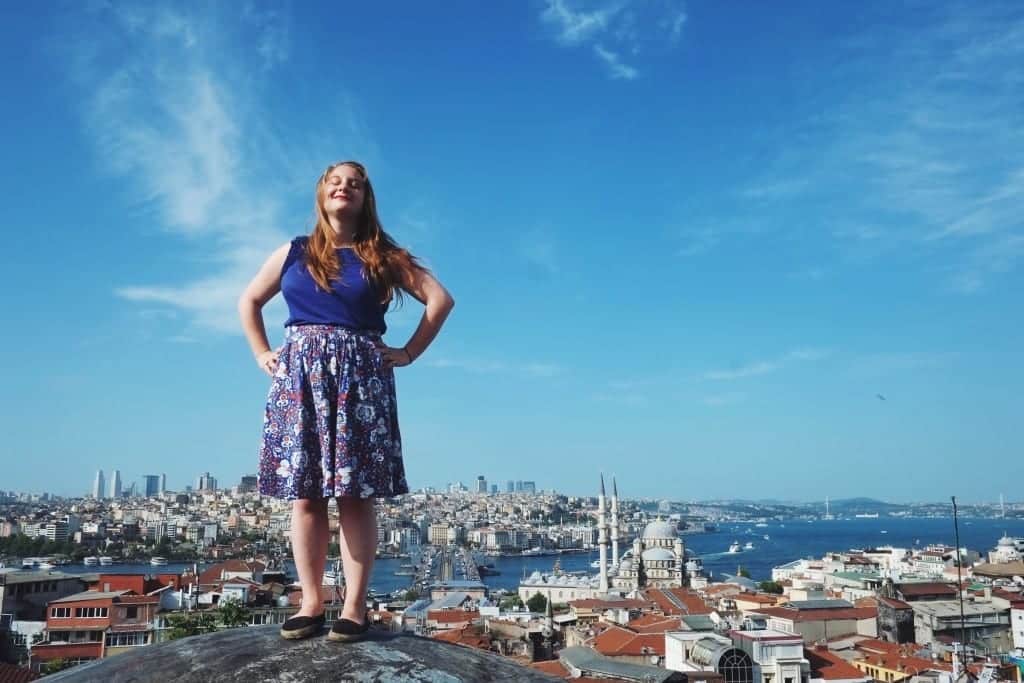
Is Turkey Good for First-Time Solo Female Travelers?
Turkey is terrific for first-time solo travelers who already have travel experience but haven’t traveled by themselves before. There is a pervasive culture of hospitality here, and locals are almost always eager to help visitors experience their country.
The main complication in Turkey is that, once you leave the heavily touristed parts of Istanbul (like Sultanahmet), fewer people speak English. Which doesn’t mean people won’t try very hard to help you get around! Anyone you ask will be happy to give you directions, even if they don’t know where you are actually going.
Turkey is quite safe and I find that pickpocketing and stealing are much less common here than you would expect, both in Istanbul for a city of its size and in throughout the country.
Here’s a story that illustrates this: I went on vacation with my cousin to a beach in the south of Turkey. After spending most of the morning by the sea, we went to get lunch at a nearby restaurant.
We ordered and chit-chatted when suddenly my cousin realized she was no longer wearing her watch — her high-tech, quite expensive watch. She freaked out, jumped up from the table and went back down to the beach, hoping maybe she had dropped it, fearing it was stolen.
A few minutes later, she returned with her watch.
“What happened? Where was it?” I asked.
“I went down to the beach in a panic,” she said, “and these two Turkish girls saw me looking around, and came up to me and asked if I was looking for a watch, they had found one on the beach.”
That’s Turkey.
Turkey Tours for Solo Travelers
If you’re not quite sure if you’re ready to travel completely solo, another option is joining a group tour! G Adventures is a company Kate recommends. Their tours are very solo-friendly, they keep their groups small, they’re sustainability-minded, and they have several tour options in Turkey.
Here are some of them:
- Absolute Turkey (15 days from Istanbul) — This comprehensive tour takes in all the best-known sights in Turkey, including Istanbul, Cappadocia, and spots up and down the Mediterranean coast.
- The Best of Turkey (8 days from Istanbul) — This weeklong tour includes Istanbul, several stops along the Mediterranean coast, and Pamukkale.
- Turkey: Coastlines and Kebabs (15 days from Istanbul) — This low-budget tour geared toward 18-to-30-somethings includes Istanbul, Cappadocia, lots of stops on the Mediterranean coast, and one memorable night at sea.
- Turkey Multisport (10 days, Istanbul to Cappadocia) — This active adventure tour goes from Istanbul to the Mediterranean Coast to Cappadocia and includes hiking, biking, and kayaking excursions.
- See all their Turkey tours here.
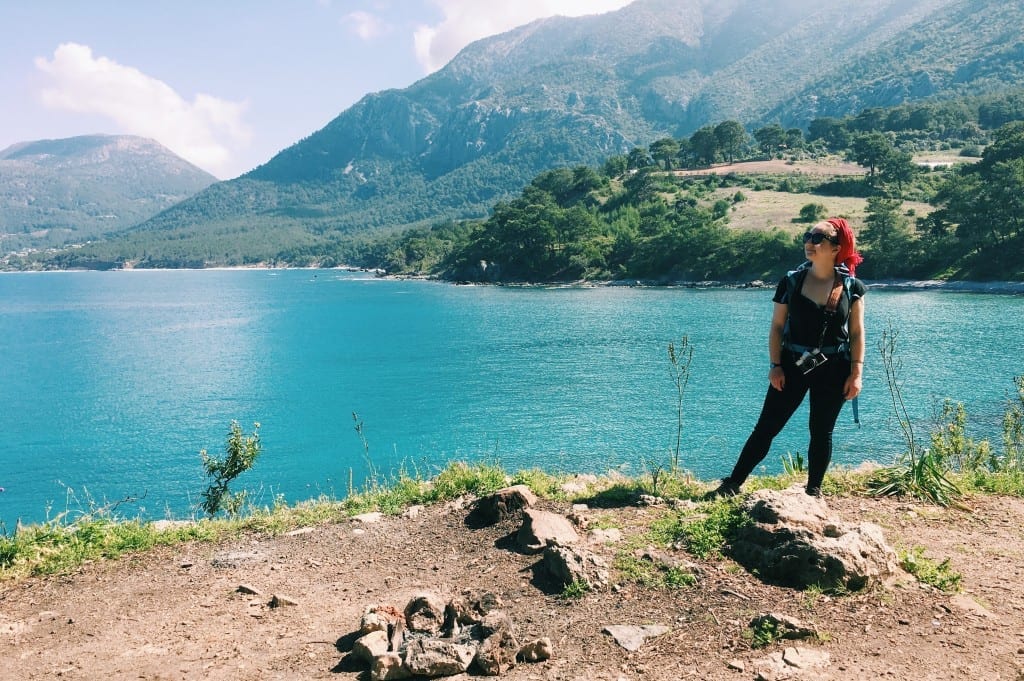
Is Turkey Good for Experienced Solo Female Travelers?
Yes! If you are an experienced traveler, get out of Istanbul and go on an adventure!
If you feel comfortable hiking alone, take advantage of the waymarked Lycian Way along the southern coast; if you feel comfortable driving alone, head out on a road trip through the country’s varied landscape — perhaps a trip along the Black Sea Coast.
Go explore the complicated Southeast of the country to learn about the ancient and modern history of Diyarbakir or Şanlıurfa or Gaziantep. There is so much to do here, and you will not be bored.
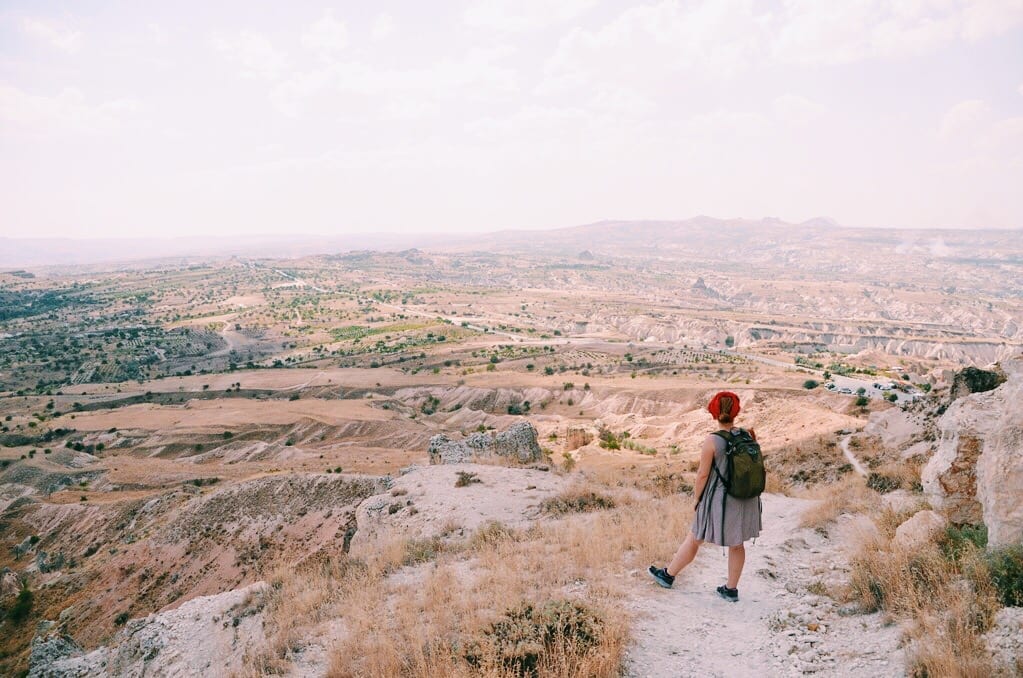
Is Turkey Safe?
“Is Turkey safe?” is something I am asked over and over and over again. Sometimes, I understand why; other times, the question seems so removed from real life here that I get frustrated.
Geographically, Turkey is sort of in the middle of everything, with Russian submarines slipping through the Bosphorus Strait, war continuing to roil the bordering Syria to the southeast, and refugees transiting on their way to Europe.
Turkey touches the Balkans, the Caucasus, the Mediterranean, and the Middle East; it’s one of the reasons there is such a rich cultural and culinary history here, and why Turkey always seems to come up in the news.
The hangover from the Very Bad Year of 2016 lingers when people think of traveling to Turkey. That was the year we had terror attacks from ISIS and others in Istanbul and throughout the country, with attacks on the since-shuttered Ataturk Airport and a nightclub and Sultanahmet Square.
That was also the year of the failed coup. I was living here then, experiencing what (in retrospect) was clearly a slow-building anxiety attack, and the coup still is the scariest thing I’ve ever lived through. AND YET.
Since 2016, the country has been quiet and safe, with no major terror attacks and no coups. Even in the thick of the Very Bad Days, life in Istanbul seemed to hum along. My parents even came to visit that year — six weeks after the coup! — and we had a splendid time together. It feels like everyone here let out a tightly-held breath sometime about 2017, and we’ve all been more at ease since. Life went back to normal.
As I always said then, until 2016, only one of the two cities I’ve lived in has had a terror attack, and that was Boston. The Boston Marathon bombing happened just after I left in 2013, years before terror came to Istanbul. (Note from Kate: I was actually at the Boston Marathon when the bombs went off. I wrote about that scary day here.)
We live in an age of terror, unfortunately, and I don’t believe that Turkey is any less safe than anywhere else in the world.
The fact that Turkey is in the middle of everything is actually one of the reasons it’s so wonderful. I meet people from all over the world here — from Iran and Nigeria and Iraq and France and Australia and Egypt and Israel and Mexico and Syria and Kyrgyzstan and beyond.
In an age where the news stokes such intense fear of “the other” (especially refugees and migrants), and when the US is shamefully closing its doors to so many people all over the world, Turkey is in many ways the perfect antidote — there’s nothing like meeting real, wonderful people to make you realize that all that fearmongering is shortsighted and idiotic.
I often walk around at night in Istanbul listening to music in my headphones, which is something I would certainly never do in the US, and pickpocketing is infrequent for a city of this size. Often, I see people leave their laptops or phones on tables at cafes while they wander off…and no one takes their devices.
That’s Turkey. There is a sense of neighborliness here that I never really experienced in the US. If your perception of Turkey has only come from the news, I really encourage you to come here. The country is so much more than what they are telling you.
READ MORE:
Top 10 Travel Safety Tips for Women

Let’s Talk About Refugees in Turkey
I mentioned above that refugees transiting through Turkey is one of the reasons the country is often in the news. I think it’s worth touching upon the refugee issue and some of the facts (and misconceptions) around it.
Turkey hosts around 3.7 million refugees, the most in the world. (The country that hosts the second-most, Pakistan, doesn’t even come close: they host 1.4 million, less than half of the number in Turkey.)
The most common country of origin of refugees in Turkey is of course Syria, but there are many refugees from Iran, Afghanistan, Pakistan, various African countries, and more. Most are trying to reach a better life in Europe, but anti-refugee sentiment has kept the majority in Turkey.
Through a fluke of history (and international refugee law), Turkey does not officially recognize most of its refugees AS refugees. After World War II, Turkey became a signatory to the 1951 Convention Relating to the Status of Refugees, which defines refugees as “persons who have become refugees as a result of events occurring in Europe.”
While many countries have since done away with the outdated geographical limitation of this definition, Turkey has not.
Syrians and other refugees in Turkey, therefore, are under “temporary protection,” with the understanding that they will eventually settle in another country. This assumption breaks down, though, when refugees are not able to leave. Some are officially registered with UNHCR as refugees, but resettlement is slow (to the point of often feeling impossible), because many countries (including the USA) have restricted the number of asylum seekers they will let in.
Because of all this, the majority of refugees in Turkey (98%, according to Relief Web) live in local communities, not in refugee camps.
I think it’s easy to read the news about the refugee crisis and forget that this is a story about real people. The US barely lets any refugees in at all (a black mark of shame upon our whole generation), and Europe is restricting the flow and the integration of refugees as much as it can.
People are still dying in the sea or slowly wasting away in the wheels of bureaucracy or waiting, trapped, on the Greek Islands. But migrants are real people who deserve to live real lives.
The very few who have the option have become Turkish citizens, and others live normal lives in this country as much as they can. They open businesses and rent apartments and fall in love and ride the ferries. Migration is a fact of life, and Turkey is one of the places in the world where that can’t be hidden away.
This is a topic that I feel particularly passionate about, obviously. So if all of that felt like too many numbers and too much information to take in, I encourage you to read this essay I wrote about travel and migration, and a friend of mine.
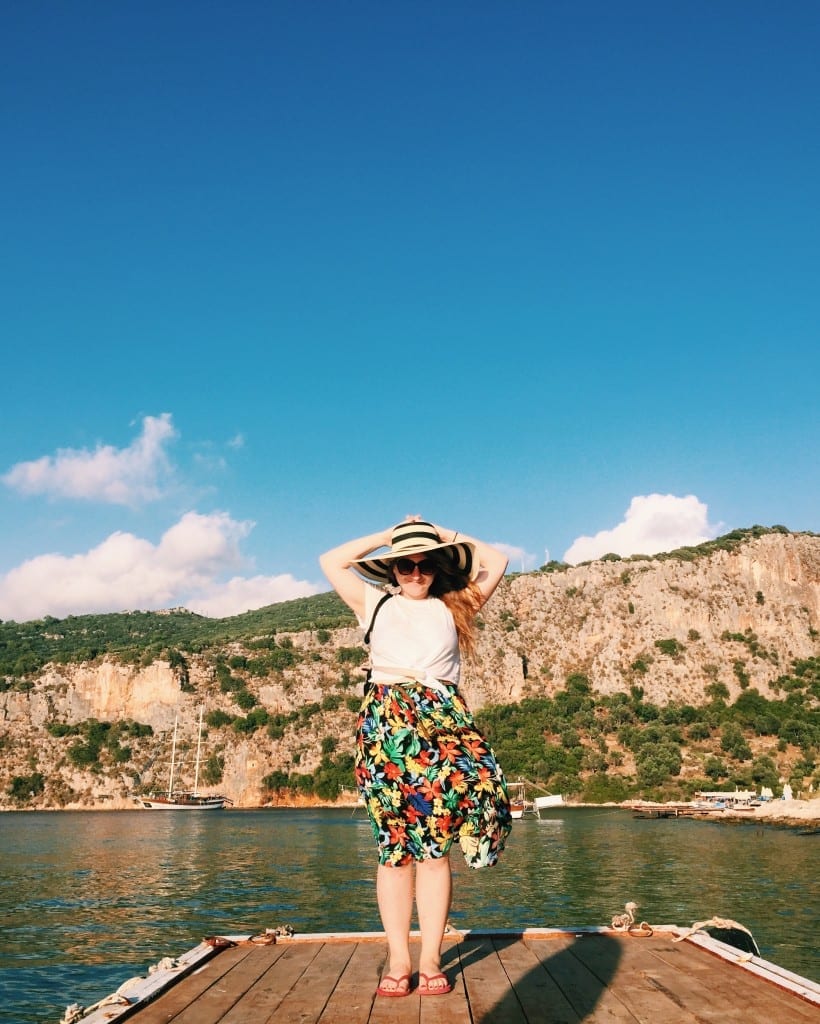
Where to Go in Turkey
There are so many fascinating places to go in Turkey. Here’s an overview of my favorite places in the country:
Istanbul. The city of all cities, Istanbul stretches from the Sea of Marmara to the Black Sea and contains layers and layers of fallen empires. It’s the cultural center of Turkey, with a vibrant art scene, trendy cafes, rollicking bars, ancient ruins, stunning Ottoman mosques, and relentless energy. There’s no place quite like it.
Cappadocia. Perhaps one of the most iconic landscapes in Turkey is the fairy chimney rock formations in the Cappadocia region. People come for the spectacular sight of hot air balloons hovering at sunrise, but I recommend hiking through the region’s wild valleys to truly experience this place.
Pamukkale. Pamukkale means “cotton castle,” and the name makes sense when you see Pamukkale’s rippling white travertine pools. Walk up through the warm turquoise water to reach the ancient city of Hierapolis, a stunning site where the Pamukkale crowds thin out and you can have some quiet.
Kaş. Fethiye and Antalya are closer to airports and therefore get swarmed with tourists, but midway between the two is the Mediterranean city of Kaş. This is where you can go scuba diving in clear turquoise water by day, read a book in the sunshine on a quiet bay in the afternoon, and feast on meze all summer evening. It combines Mediterranean bliss with all the comforts of a city.
Antakya. Geographically hemmed in by the Mediterranean and Syria, Antakya might look shady on a map but don’t be fooled: this city is the culinary peak of Turkey. It’s safe, charming, and has a splendid archaeological museum that you can visit when you need to take a break from eating everything.
(Fun fact, after I visited Antakya, I started ordering kilos of homemade tahini from a guy in the city, because I’ve never tasted better tahini in my life. He sends it to Istanbul in a giant reused plastic tub!)
The Lycian Way. If you enjoy trekking, or if you’d like to go trekking and never have before, the Lycian Way is a stunning and easy option. The 30-day trail in Turkey’s southwest is waymarked and for most of the way, you can reach a bed and breakfast every evening. Plus the trail skirts past wild views of the Mediterranean coast, ancient Lycian ruins (including those at Patara and Olympos), and quiet fields lined with olive trees.
Ephesus. The iconic Library of Celsus is here, along with an amphitheatre and the comprehensive Ephesus Museum. Take time to explore the charming nearby town of Selçuk as well as the old Greek village of Şirince, where the locals make their own fruit wine.
The Kaçkars. The Kaçkar Mountains in Turkey’s northeast feel completely different from the rest of the country: they’re lush and green, with white goats wandering through foggy mountain plateaus. This is a great place to go trekking, roadtripping, or just eating: lots of gooey cheese, thick honey, cornmeal, and butter, the better to stay hearty and energized in the mountains.
Ani. Right outside of the city of Kars, perched on the edge of the Armenian border, is the ancient ruined city of Ani. The decrepit buildings seem to rise directly out of the landscape, eerie and quiet at the edge of the Anatolian plain.
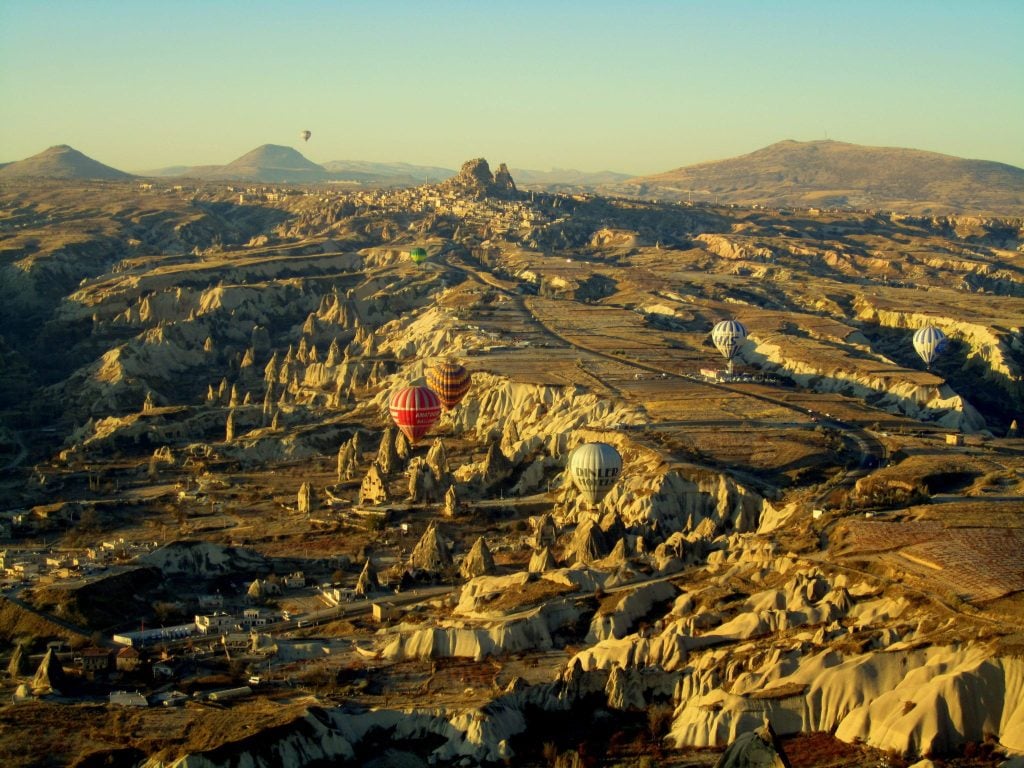
Best Things to Do in Turkey as a Solo Traveler
Take a hot air balloon ride in Cappadocia. Get a view of the wild landscape from above at sunrise. Flights leave early in the morning and only go up in good weather, so I recommend making a reservation for your first morning in case you need to reschedule.
Go hiking along the coast or in the mountains. There are many trails in Turkey, including the Lycian Way and the St. Paul’s Trail, and you can hire a guide to take you through the Kaçkar Mountains.
Visit the Hagia Sophia. The church-turned-mosque-turned-museum in Istanbul dates back to the 6th century and has stunning Byzantine-era mosaics.
Ride a ferry from one continent to another in Istanbul. The city spans both Europe and Asia, and a ferry ride between the two takes only 20 minutes.
Eat the local cuisine. Turkish food is incredible, and incredibly varied. Eat as much as you can.
Spend a long morning having kahvaltı, or Turkish breakfast. Turkish breakfast involves many small dishes of honey and kaymak (clotted cream) and jams and cheeses and olives and cucumbers and eggs and yogurt and pastries and more, all washed down with endless cups of tea.
Learn how to scuba dive in the Mediterranean among ancient ruins. Kaş and the area around it is particularly good for this, with an underwater world full of ancient cities and shipwrecks. If you’re new to diving, there are beginner lessons available.
Visit Ottoman mosques, Byzantine cisterns, and waterside palaces in Istanbul. The city was the capital of empires, and it shows. Some of my favorites places to visit are Suleymaniye Mosque, Theodosius Cistern, and Topkapı Palace.
Smoke scented waterpipes and sip tea at a nargile cafe. Hookah, waterpipe, nargile, whatever you call it; it’s quite common here and there are cafes that are lovely tea gardens to sit and smoke in. I don’t smoke nargile so much these days (I run and swim and dance and therefore like to breathe), but I still enjoy sitting with friends, surrounded by fragrant smoke.
Try authentic Syrian food in Istanbul or Gaziantep. With millions of Syrians living in Turkey, there are now MANY Syrian restaurants, and Syrian food is DIVINE. Istanbul is full of great places (especially in Aksaray), and Gaziantep has the unofficial nickname “little Aleppo” because so many people hailing from that Syrian city (only 75 miles away) have relocated there, and brought their cuisine along with them.
Visit Istanbul’s Princes Islands for the day. Istanbul has nine islands, four of which are easy to visit. Cars are not allowed on the islands, so take a ferry over and enjoy some rare nature and quiet.
Explore ancient ruins from many civilizations all over the country. Into early Christianity? Go to Ephesus and the Celsus library. Curious about the Lycians? Stop by Patara or Olympos. Fascinated about ancient Georgian kingdoms? Venture northeast to spot some stunning crumbling monasteries. There is a wealth here.
Hang out on a perfect beach. Turquoise water, sandy beaches, blooming magenta bougainvillea…this can describe so many beaches along the Aegean and Mediterranean Turkish coasts.
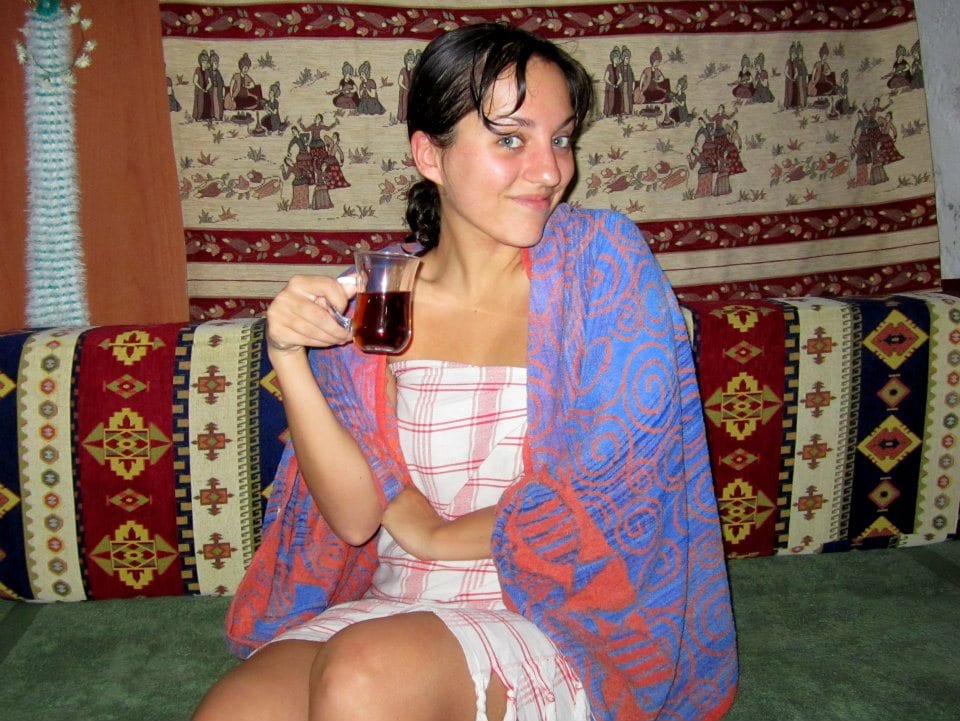
How To Visit a Hamam in Turkey
Hamams, or Turkish baths, are popular here among both locals and visitors, and this is an experience I highly recommend to solo female travelers. A friend and I are currently in the middle of an informal project to visit as many different hamams in as many different neighborhoods as possible — tough research, I know, but someone has to do it!
If you want to go to a hamam on your visit to Turkey, I recommend choosing one of the higher-end hamams because they will be better equipped to deal with foreigners who don’t speak Turkish, and they are very nice.
A favorite of mine is Kiliç Ali Paşa Hamamı, which is centrally located in a historical building in Karakoy. There are usually different entrances for women and men, and they are clearly marked. (The word for woman in Turkish is “bayan.”)
What should you wear to a Turkish hamam? Most women wear bikinis (at least bikini bottoms), though you can go without if you prefer. Hamams generally provide you with a towel. Usually you spend some time sweating out on a hot marble slab, and then eventually you are washed and scrubbed by a woman from the hamam. (She will ask you to take off your top at this point if you haven’t already.)
The washing and scrubbing is intense, and the perfect way to remove the dirt and grime of life that has probably made its way into your skin.
Afterwards, you’ll be provided with a dry towel or robe, and can sit around to drink tea or juice or ayran (a salty yogurt drink).
READ MORE:
Adventurous Kate Gets Naked in Istanbul
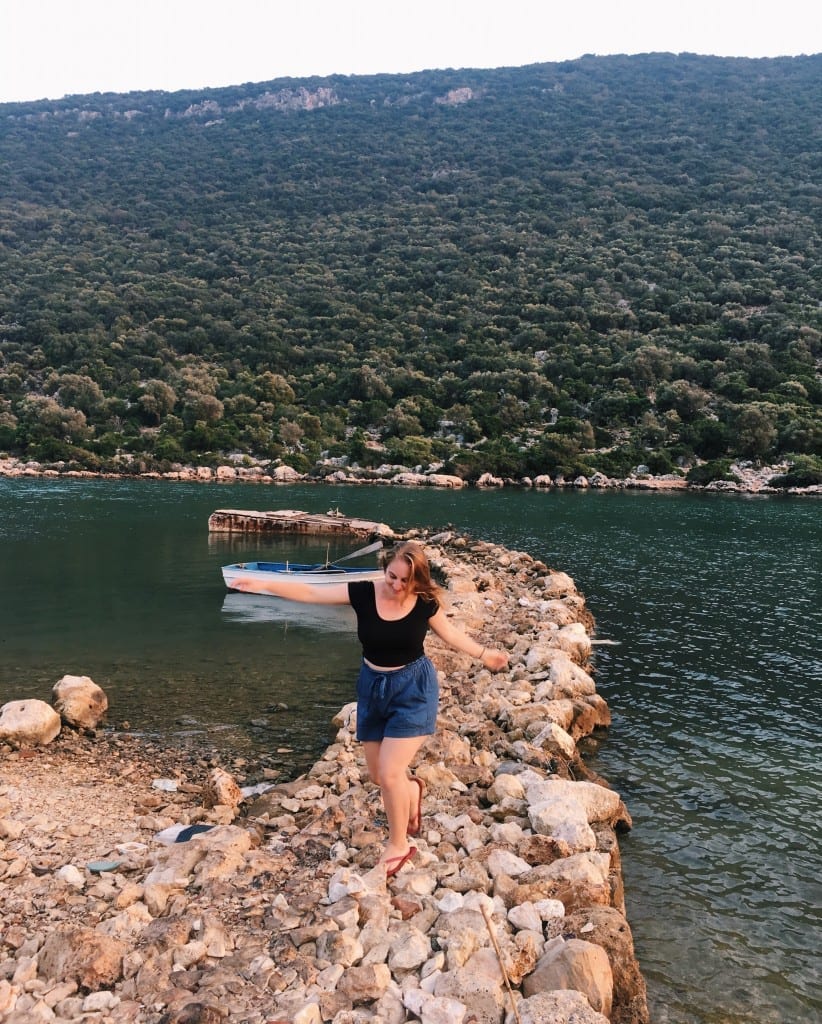
Best Time to Visit Turkey
Turkey is a big country and the weather can vary wildly between regions. Istanbul is generally best around April-May and September-October, when the temperature is perfect.
The entire month of April is the Tulip Festival in Istanbul, when every green space is flooded with the flower — it’s a particularly lovely time to visit.
Summers in Istanbul can be sticky and hot and there aren’t many places to swim. If you’re visiting Turkey in the summer, head on down to the coasts, where the swimming season lasts through October. Summer can be a wonderful time to hike in the mountains, too.
In the winter, Istanbul still has a lot going on and the coasts have mild, comfortable weather — too cold for swimming, but perfect for day hikes and city wanders. You might see snow in Cappadocia and the mountains.
In terms of crowds, summer is the busiest season in Turkey, both in Istanbul and on the coasts. The most crowded time is during the bayram, or holidays, when Turks have vacation and often travel to the beach. Pay attention to the period just after Ramadan (Şeker Bayram) and the holiday of Kurban Bayram.
Visiting Turkey during Ramadan
I have traveled in Turkey extensively during Ramadan, and your experience will really depend on where you are and what you are doing. In Istanbul, life continues on fairly normally, and in my very liberal neighborhood you can barely tell it is Ramadan — people still fill up the sidewalk seating at bars, drinking late-afternoon beers.
I’ve traveled to the beaches during Ramadan as well as to the more conservative Southeast region, and never had problems finding a meal.
The most difficult places to travel during Ramadan, for me, were the towns and villages around Lake İznik, just south of Istanbul. I went on a bicycle trip here with a friend, and it was almost impossible to find an open restaurant before sundown (and the local old men were not super pleased to see me flying into the center of town in my tank top and shorts).
Turkey is a secular republic, so eating and drinking in public during Ramadan is not illegal and most touristed areas will have options for people who are not fasting. I would recommend reading the area and paying attention to what people around you are doing, and practice patience with taxi drivers or shopkeepers who might be a bit grumpier than usual.
I’ve written about visiting Turkey during Ramadan here.
(Note from Kate: I’ve traveled in Istanbul during Ramadan and found it to be a wonderful, festive experience. Enjoy the huge, cheap iftar meal specials and head to the Blue Mosque for post-sundown picnics!)
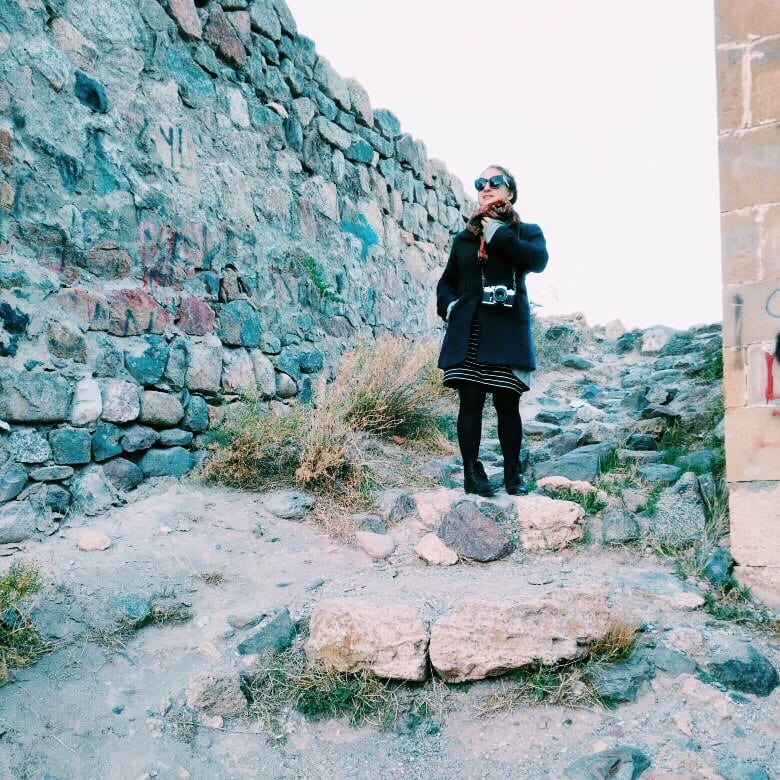
How to Get Around Turkey Solo
It’s easy to get around Turkey as a solo female traveler. There are flights, good roads, some trains, and a comprehensive bus system that covers the whole country in depth.
How to Get to Turkey
Most travelers arrive in Turkey by air. Most flights arrive in Istanbul, but keep in mind that there are cheap flights from all over Europe to Turkey’s coastal hubs like Dalaman and Antalya.
To find the cheapest flights to Turkey, I recommend using Skyscanner. You can set it for flights to anywhere in Turkey rather than Istanbul if you want to keep your options open!
There is one daily international train to Istanbul arriving from Sofia, Bulgaria, and Bucharest, Romania.
Buses to destinations in Turkey arrive from all over the surrounding countries.
Some travelers arrive in Turkey by boat — there are frequent ferries from Greek islands to Turkish islands and the mainland, and ferries cross the Black Sea from Ukraine and Russia.
Keep in mind that the Turkey-Armenia border is closed and the Turkey-Syria border shouldn’t be crossed by independent travelers at this time. Crossing from Turkey into northern Iraq is Iraqi Kurdistan, which has a different visa process to other parts of Iraq.
How to Get Around Turkey by Air
The easiest way to get around Turkey if you are traveling long distances and based in Istanbul is to fly. Istanbul has two airports and frequent, inexpensive domestic flights all over the country.
Most domestic flights will originate in Istanbul or Ankara. Turkish Airlines usually gives you small sandwiches on domestic flights, while the budget airlines like Pegasus do not.
I recommend using Skyscanner to find the cheapest domestic flights in Turkey.
How to Get Around Turkey by Bus
Buses between cities in Turkey are frequent and much nicer than their American equivalent. Bus rides in Turkey include free cups of tea and Nescafe, snacks, frequent rest stops, and occasionally lunch stops as well (depending on how far you are traveling).
If you show up at the local otogar (bus station), you can easily figure out which bus companies are leaving at a time that works for you. Buses usually have assigned seating and women will generally be seated next to women, men next to men. This is assuming everyone actually follows their assigned seat, of course.
(Note from Kate: I was incredibly relieved when a bus driver in Turkey took me to sit next to an older woman on my overnight bus from Gorëme to Fethiye. It felt like people were looking out for me.)
For shorter distances, there are dolmuş (big shared taxi vans) and minibuses that drive between frequently-traveled destinations.
How to Get Around Turkey by Train
Turkey has a train system that runs throughout the country, though not as extensively as its bus system.
Booking trains in Turkey can be a challenge — while you can book them online at the Turkish State Railways website, it will be much easier to book them from a travel agency office once you arrive in Turkey.
Try to book trains a day or two in advance; if it’s during holiday times, book as early as possible.
Renting a Car in Turkey
If you’d like to see Turkey at your own pace, it is easy to rent a car and the roads in most of the country are good for a road trip.
If you’re looking for an affordable car rental in Turkey, I recommend using RentalCars.com.
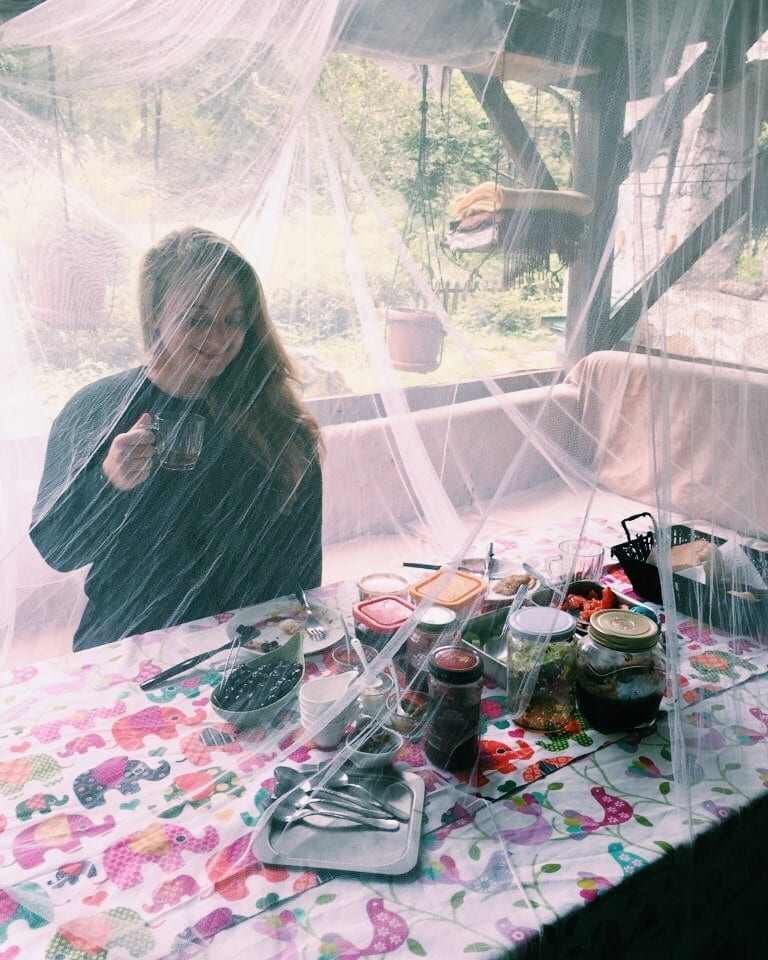
Eating Alone in Turkey
If you’re in Istanbul or another major city in Turkey, no one will think it’s strange that you’re eating alone — many of us living in the city do it all the time. Istanbul is bursting with restaurants and cafes and you can always find someone sitting alone, reading or working on a laptop or writing in a notebook as they eat.
Outside of cities, you’re more likely to get attention simply by being a foreigner who doesn’t speak Turkish, not because you are eating alone.
A popular kind of restaurant to get homemade food quickly is a lokanta, sort of a cafeteria-style set-up that was designed to serve workers in need of quick and hearty lunches. The food is fresh and, because you can see what’s available in front of you, you don’t need to understand a menu. You can simply point at what you like.
My favorite simple dish at most lokanatas is nohut yemeği (chickpeas cooked in oil and tomato paste) with pilav.
If you go to a meyhane (fish restaurant), you’ll often be presented with a large tray of meze (small dishes) to choose from, which can also be useful if you don’t speak any Turkish.
Some popular choices are patlıcan salatası (smoky eggplant puree), giritli ezme (a cheese spread with walnuts and herbs), haydari (thick yogurt with garlic and herbs), acılı ezme (a spicy mash of tomatoes, peppers, herbs, and sometimes pomegranate molasses), and hardal soslu levrek (sea bass in a mustard and peppercorn sauce).
It’s also easy to eat on-the-go here — Turkey has an abundance of street food.
There’s always döner (shaved meat cooked on a vertical spit), but I prefer balık ekmek (grilled fish sandwiches) and kumpir, which are baked potatoes stuffed to the gills with cheese and butter and all sorts of meat and vegetables, from corn to olives to beets to sausage to pickles — you get to choose what goes in the potato. It’s the most maximalist potato you will ever consume.
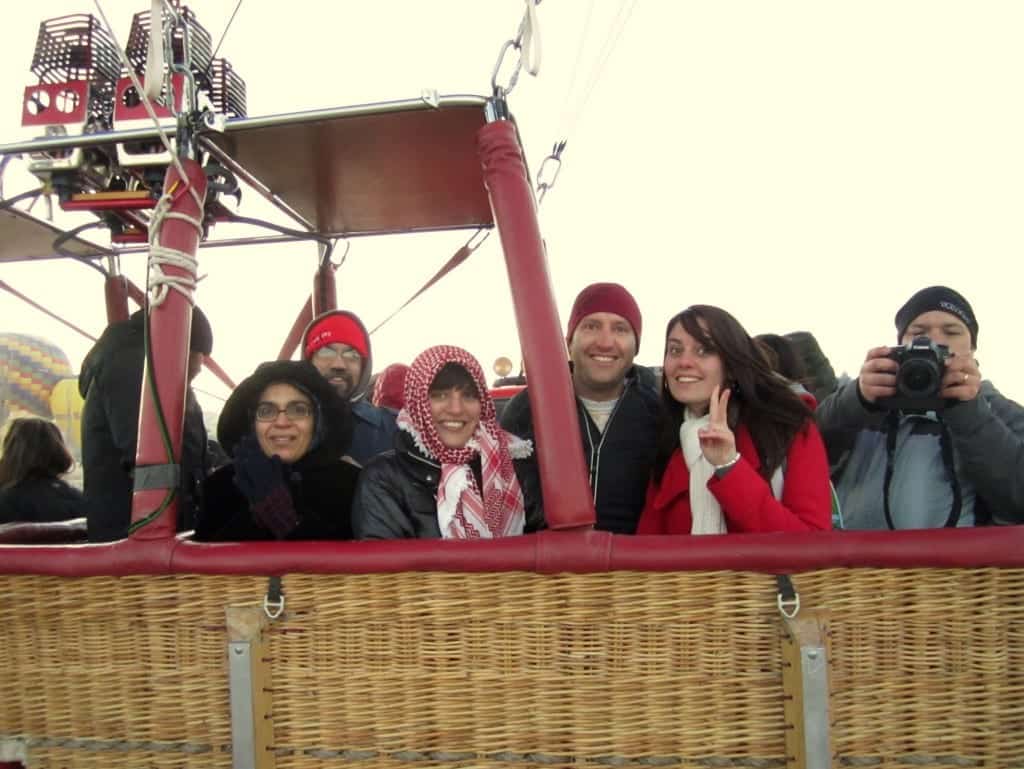
How to Meet People in Turkey
If you’re looking to meet people in Turkey while traveling solo, you’re in luck. It’s easy to connect with travelers while doing organized activities, and locals are friendly, inquisitive, and love a good time.
Here are some of the best ways to meet people in Turkey:
Check out Yabangee. Yabangee is an English-language site that’s primarily aimed at foreigners living in Turkey, and they arrange events regularly, from talks to trivia nights to dance parties. I recommend checking out their events page for the dates of your visit.
Stay in social hostels and guesthouses. Read through the reviews of hostels and guesthouses (and keep in mind that many Turkey hostels have private rooms!) and spend time in the common areas. (Note from Kate: I made a lot of friends at Agora Guesthouse in Istanbul!)
Check out local meetups via Meetup.com. Whether you’re into travel, running, movies, board games, or just want to meet a group of nice people, there’s a Meetup for that.
Couchsurfing. The Couchsurfing Turkey community isn’t just for free accommodation, it’s also for socializing. The local Couchsurfers often put on events and meetups in a variety of destinations.
Join local tours and events. Turkey is all about activities! Doing a food tour or going on a hot air balloon ride in Cappadocia is a great way to meet other people. Once the day is over, ask someone if they feel like getting a drink or dinner.
Put out feelers on social media. You never know — often a friend of yours will have a cousin or friend who is in Turkey at the same time as you, or knows someone who is living there as an expat long-term.
Tinder. If you’re looking to date or hook up in Turkey, it’s as easy as swiping right.
READ MORE:
How to Meet People While Traveling Solo
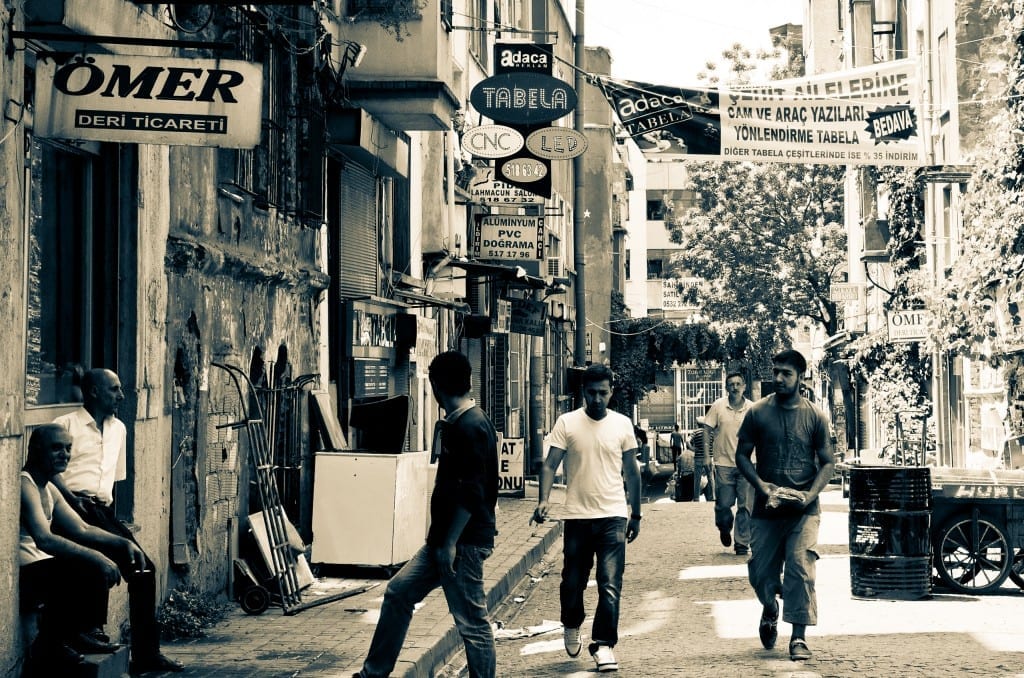
Street Harassment in Turkey
The street harassment in Turkey varies wildly, and is mostly concentrated in the most touristed areas, like Sultanahmet or the Grand Bazaar. Shopkeepers will shout at you to come into their shops, will try to guess where you’re from, will do anything to get a reaction and get you to engage with them.
In other areas, you might get to occasional comment or whistle (lots of “Hey lady hey lady!”), but there is an antidote to all of this: you must practice the fine art of ignoring people.
As an American, I was conditioned to smile and react and if someone asked me to come into their shop or have a tea, to answer “No, thank you.” Wrong — don’t even bother doing this in Turkey. Just completely ignore anyone you do not want to talk to.
Any reaction is an encouragement for someone to keep talking to you. It takes practice, but it’s the most surefire way to not be bothered: active, aggressive ignoring.
People won’t touch you in Turkey, generally. All the harassment that takes place is usually verbal. And it is usually from merchants trying to sell you things. Get out of the touristy parts of destinations and it happens much less frequently.
In places that get very few tourists, I think you’re less likely to face any harassment. In a small conservative Black Sea town called İspir, my friend and I were incredibly conspicuous as the only two very-blonde foreigners on the streets.
I think everyone was so befuddled at our presence that they defaulted to hospitality, and offered us tea.
We drank a lot of tea on that trip.
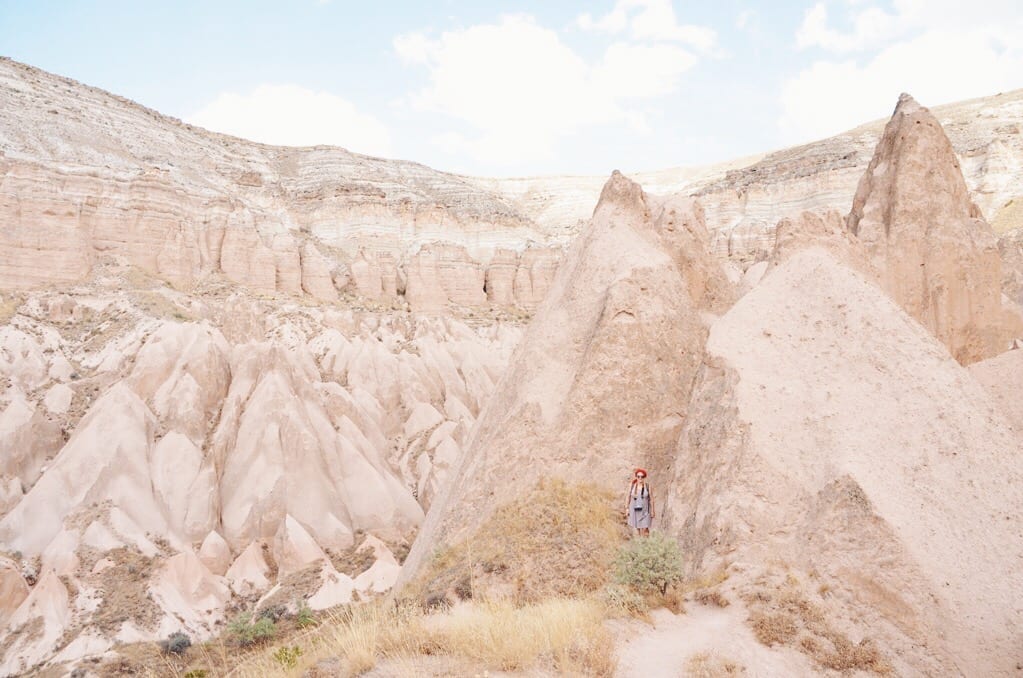
Turkey Travel and Safety Tips
Get data on your phone or get a Turkish SIM card. This allows you to follow the route you are traveling in a taxi on Google Maps, use Google Translate, and generally be more equipped to navigate the country. You can buy a SIM card at a kiosk at the airport. I use Turkcell; Vodafone and Turk Telekom are also options.
Keep an eye on the meter when taking a taxi. The meter is always required to be on, so if it isn’t, you can insist. If the cab driver won’t turn the meter on, get a different cab. Generally, it helps to talk to the driver about where you are going before you get in a taxi, and don’t be afraid to get out of taxis with rude drivers. For every jerk, there are plenty of taxis that are perfectly fine.
There is a common scam in Istanbul where a taxi driver will insist you paid him with a smaller bill than you did, and short change you. (So for example, if you pay with 100 TL, he’ll say you paid with a 20 TL note.) I have never experienced this myself, but just be aware.
If you are coming into a city by bus at night, try to know ahead of time how you are getting from the bus station to your hotel or wherever you are going. Some of the bus stations in Istanbul (especially the main one in Istanbul) can be a little shady at night.
Haggling is the way to purchase at markets in Turkey, including the Grand Bazaar. Never accept the first price — people are expecting you to lowball them. Have fun with it, but don’t get so caught up in it that you’re arguing for five minutes over the value of 25 cents with someone who makes far less money than you.
Ignore men you don’t want to talk to, don’t try to be polite. This is different from traveling in the United States. They will only stop if you ignore them completely.
It doesn’t hurt to occasionally invent a fake boyfriend if the situation calls for it. (Note from Kate: Sometimes I fake a call to a boyfriend or someone else before I get in a taxi, making a clear show of reading the driver’s license plate number out loud.)
Is the water safe to drink in Turkey? In some areas. The water is safe to drink in some cities in Turkey, but it isn’t safe in most of the country, and Turks don’t drink tap water. While most travelers rely on bottled water, it creates a major waste problem.
For this reason, I recommend you bring a LifeStraw, a bottle that purifies water as you drink it through its straw. Alternatively, you can bring a reusable bottle and invest in a SteriPen water purifier (much better and faster than tablets).
See a travel doctor before your trip and be prepared on what to do if you get sick. If you get food poisoning or a similar illness, your doctor may advise you to take antibiotics that are easily available at pharmacies throughout Turkey. As I am not a medical professional, you should ask your doctor what you should do.
Keep your valuables locked up in your accommodation and only take with you what you need that day. Kate does this with my Pacsafe Travelsafe and she considers it the most important thing she packs. Keep an extra debit card and at least $100 hidden in obscure parts of your luggage.
Get an extra debit card. You should have two debit cards to two different bank accounts. If you only have one, I recommend you get a debit card from Transferwise. Keep a few hundred dollars in your account, hide the card deep in your luggage, and use it if your primary debit card is stolen.
Never leave your bags anywhere unattended. Take your belongings with you.
If you carry a purse, hold it close to you. I recommend a crossbody purse, made out of a tough material like leather or fake leather, that zips shut. I recommend many purses in this post. Never let it hang behind you — always keep it in a place where you can see it, and keep your hand on it if you’re in a crowd.
If you carry a wallet without a purse, don’t keep it in your back pocket. This is obvious to thieves. They will grab it and run.
Be careful about your drinking. Drink less than you ordinarily would at home — two drinks is a good limit. Only take drinks from bartenders, never take a drink from a stranger, and always keep it with you and keep an eye on it. Be especially cautious in party spots like Bodrum and Marmaris, but drink spiking can happen anywhere.
Do not take drugs, even if you’re a party drug enthusiast. Drugs in Turkey can be cut with poisonous substances that can often lead to your death, and if you’re caught by the police, you’ll be in life-changing trouble.
Spend extra money on staying safe. If it costs you money to take a taxi rather than walk, or to stay in a guesthouse in a well-lit, central area, do it. It’s worth the peace of mind. Don’t pinch pennies on your safety.
Bring a digital Turkey guidebook. I always bring PDFs of Lonely Planet guidebooks — they have critical information, like details on transportation and the locations of medical centers, and a digital version adds no weight to your bag. You can buy the book or individual chapters, and I keep my PDFs in the Books app on my iPhone. I recommend Lonely Planet Turkey.
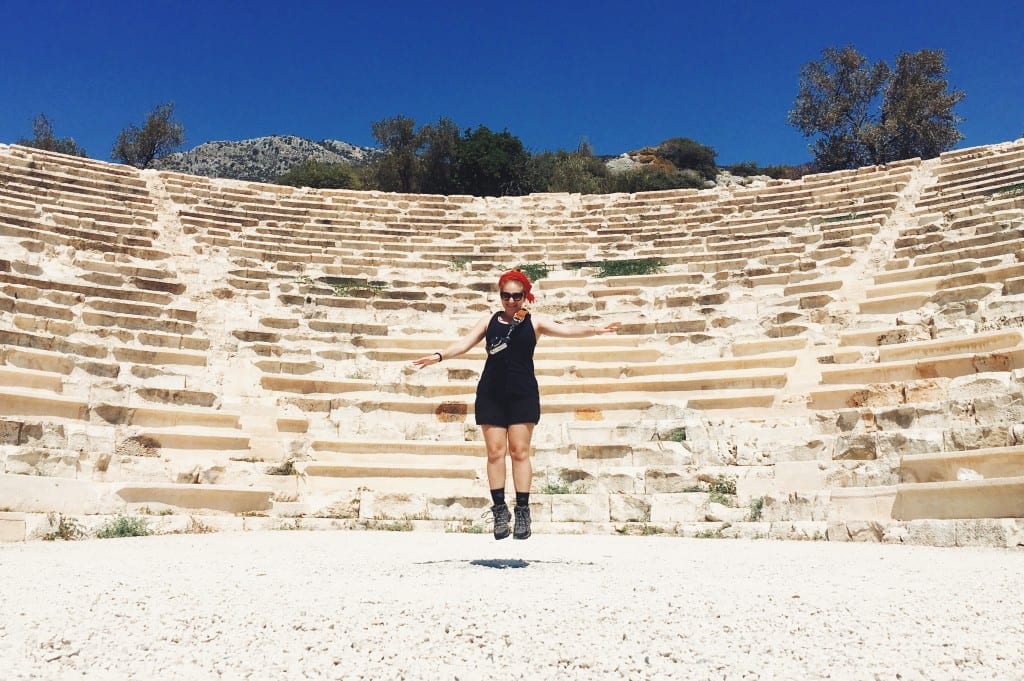
What to Pack for Turkey
What you should wear in Turkey varies depending on where you are. I go through most of the summer in crop tops and shorts (because it’s SO humid here in Istanbul), which is not a problem in my liberal neighborhood of Kadikoy and in most areas of the city that I spend my time day-to-day.
If I was going to a more conservative neighborhood, though, I might wear a knee-length skirt and a shirt that tucks in (though honestly, I mostly stick with the crop tops anyway).
In coastal areas, where people are spending time on the beach, wear what you would wear at any beach town. Make sure you bring your bathing suit! A bikini can be useful if you are planning on going to a hamam, as well.
In more conservative parts of the country, it will probably be more comfortable for you to dress slightly more conservatively — I am a big fan of maxi dresses in general. I traveled around Southeast Turkey in the thick of the summer (it got up to 108 F/42 C) and I mainly wore long skirts with t-shirts and maxi dresses.
Shorts have become MUCH more popular in Istanbul in the last seven years, even short-shorts. I still find that low-cut shirts bring on the most uncomfortable attention, so you should gauge your comfort level with that. Again, much of it depends on where you are, and what the locals around you are wearing. Turks are quite stylish.
It helps to have a scarf to cover your head and shoulders if you are going to visit a mosque in Turkey, though they are almost always provided by the mosque as well. I have a light cotton scarf that fits in my bag, and I carry that if I’m going to visit a mosque.
The dress code at Turkish mosques requires that women cover their heads, shoulders, and knees, though how much leg below the knee you are allowed to show depends on the mosque. (Sometimes I’ve been able to get in wearing a midi skirt, other times they’ve given me a skirt to cover up.)
I also recommend shoes that are easy to slip on and off for your own convenience, as you will have to remove them to visit the mosque.
Kate recommends shoes that come with quality arch support from The Walking Company, ideally the Abeo brand: black flats, black sandals, black boots, flip-flops with arch support, depending on the time of year. Also bring a pair of trail runners, which work equally well for hiking and working out.
A Speakeasy Travel Supply scarf is ideal for travel — they all have a hidden pocket for your passport or cash, and come in different patterns and weights perfect for Turkey at any time of year. I love these scarves (I even designed my own!).
A portable safe like the Pacsafe Travelsafe is vital for protecting your belongings. Kate considers it the most important thing she packs.
Finally, the water isn’t safe to drink in most parts of Turkey, so bring a LifeStraw or SteriPen water purifier and reusable bottle to keep from buying plastic bottles and creating more waste.
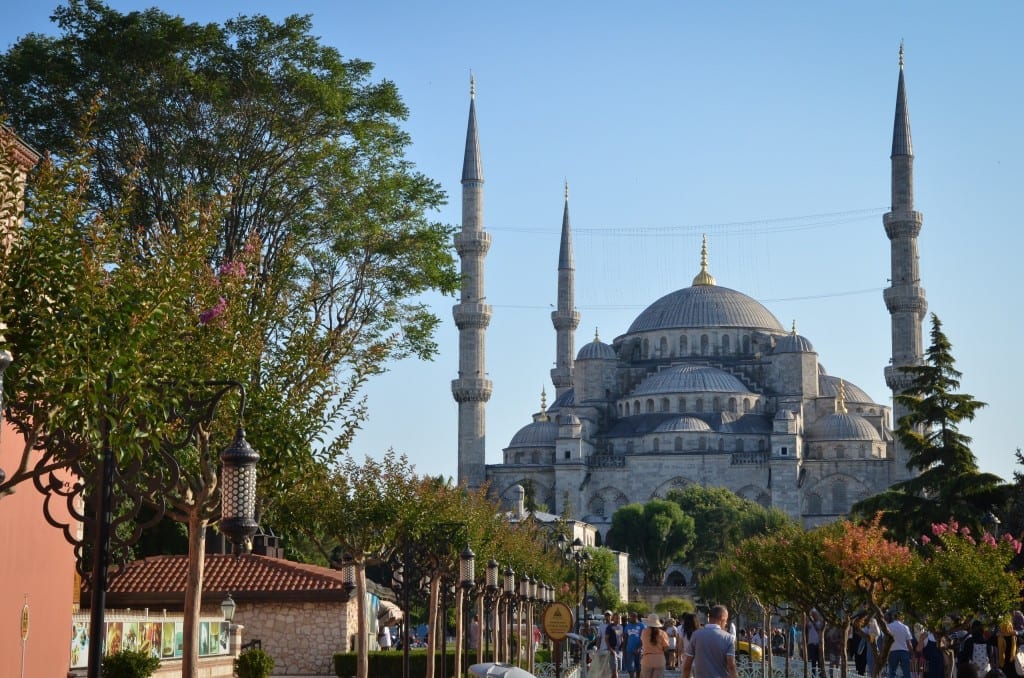
Travel Insurance for Turkey
One last note — it’s absolutely vital to have travel insurance before traveling to Turkey. If you get sick or injured on your trip, if you get robbed, or even if you have to be flown home for more care, travel insurance will protect you from financial ruin. Adventurous Kate uses and recommends World Nomads for trips to Turkey.
Travel insurance will help you in your hour of need if you get your wallet stolen from your hostel in Istanbul; they will help you get medical care if you come down with appendicitis or break an ankle while climbing the ruins at Ephesus; and if your flights get canceled due to storms, you can get accommodation and new flights paid for.
As always, be sure to read your policy carefully and make sure it’s a fit for you. See what World Nomads covers here.
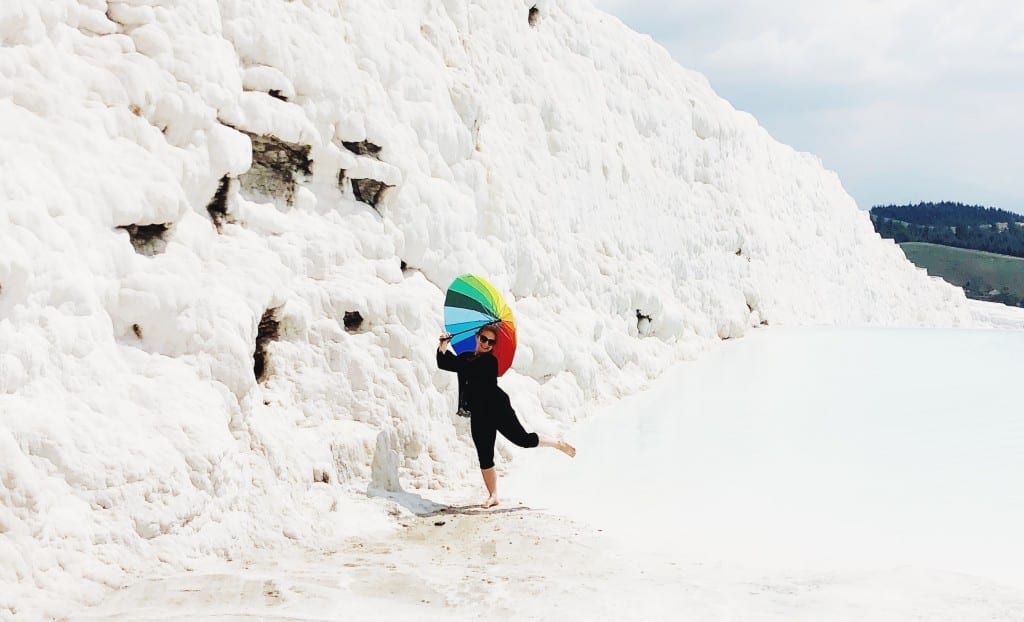
Turkey is waiting for you!
Turkey is one of those places that just grabs you — I’ve met so many people who came to visit and kept coming back until they finally moved here. I am one of those people!
I remember on my first trip, I was so completely enamored with the smell of spices and the drone of the call to prayer and the caw of circling seagulls and the colors of the bazaars and breezes on the Bosphorus and the intense kindness of everyone I met. It was almost too much to make sense of it all.
I went home to the US and would dream about Turkey, those steamy summer nights surrounded by scented nargile smoke and clinking tulip cups of tea. I started plotting my return to Istanbul immediately. It’s an intoxicating place.
So come to Turkey, see what it’s really like to travel as a solo woman here. Swim in the Mediterranean or stroll the backstreets of ancient Byzantium or trek through Cappadocia’s fairy chimneys. Turkey has a way of wiggling into your heart. There’s nowhere quite like it.
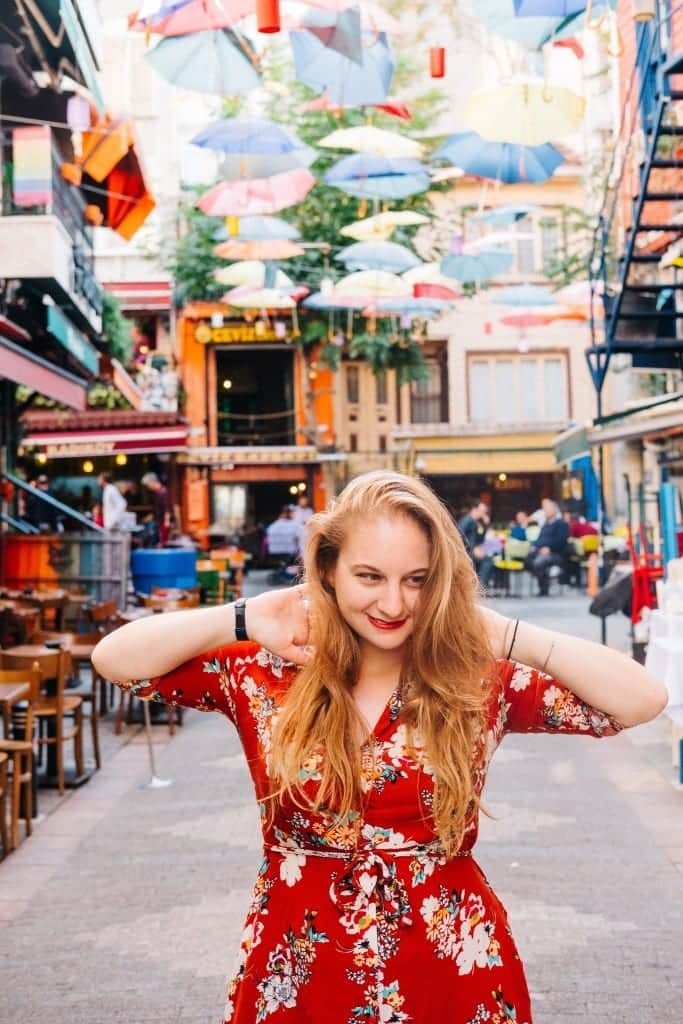
About the Author
Katie Nadworny is an Istanbul-based writer, journalist, and photographer who specializes in the intersection of culture and politics in Turkey, Eastern Europe, and the Middle East. Her work has appeared in National Geographic, The Guardian, The Daily Beast, The Independent, BBC Travel, Cornucopia Magazine, and PRI, among other places. She updated the Istanbul chapter of the most recent Fodor’s Turkey guide.
Her blog Katrinka Abroad combines personal essays with analog photography. You can find her on Instagram at @katrinkasasha and @katrinkafilm and on Twitter @katrinkasasha.
Read More About Turkey:
A Day in Kadikoy, Istanbul’s Hippest Neighborhood
Adventurous Kate Gets Naked in Istanbul
Freezing in a Hot Air Balloon in Cappadocia
Fethiye, Turkey: Come Here for Chilled Out Bliss
See all the Solo Female Destination Guides here.
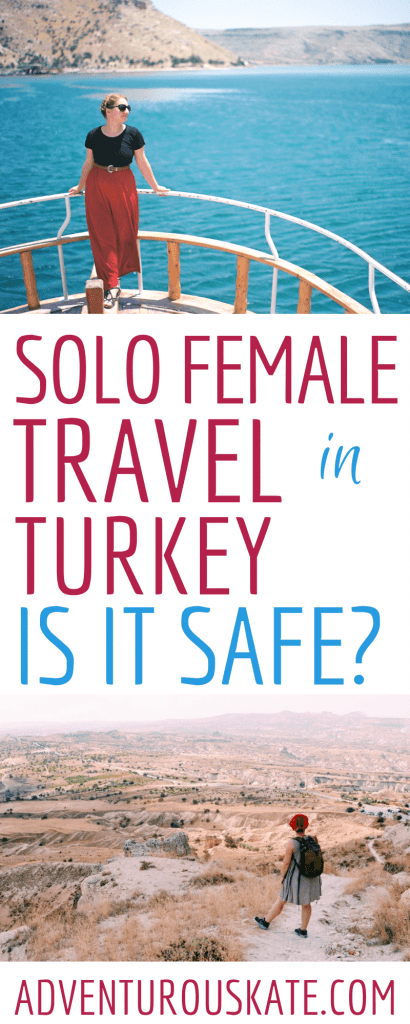
Have you traveled solo in Turkey? Share away!